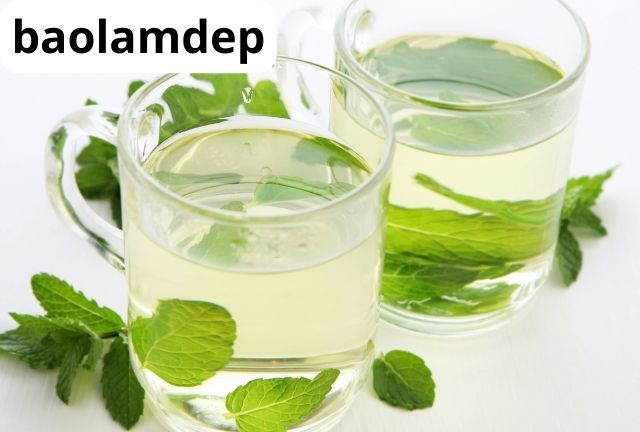How to harvest lemon balm for tea? Are you a tea enthusiast looking for a natural and refreshing option to add to your collection?
Look no further than lemon balm tea! This delightful herbal tea is known for its calming properties and pleasant taste.
In this article, we will provide a comprehensive guide to harvesting lemon balm for tea. From who can benefit from drinking it to step-by-step instructions on how to harvest and prepare the leaves, we’ve got you covered.

1, Who Can Benefit from Drinking Lemon Balm Tea?
Lemon balm tea is a great option for anyone looking to incorporate a natural and caffeine-free beverage into their daily routine. The tea is known to have many benefits, including:
- Calming effect: Lemon balm contains a compound called rosmarinic acid, which has been shown to have a calming effect on the body.
- Digestive aid: The tea is also known for helping with digestion issues such as bloating and gas.
- Immune booster: Lemon balm contains antioxidants that help support a healthy immune system.
- Mood booster: Drinking lemon balm tea can help improve mood and reduce anxiety.
2, What You Need to Know Before Harvesting Lemon Balm
Before you start harvesting your lemon balm plant, there are a few key things you should know:
- Time of year: Lemon balm is best harvested in the late summer or early fall when the plant has reached its peak growth.
- Time of day: It’s best to harvest lemon balm in the morning after the dew has dried but before the heat of the day has set in.
- Tools: You’ll need a pair of sharp scissors or pruning shears to cut the stems of the plant.
- Location: Make sure you’re harvesting from a lemon balm plant that has not been treated with any pesticides or chemicals.
3, How to Harvest Lemon Balm for Tea
Now that you know what to consider before harvesting lemon balm, here’s a step-by-step guide on how to do it:
- Identify the plant: Look for a lemon balm plant that has healthy leaves and stems.
- Cut the stems: Using sharp scissors or pruning shears, cut the top third of the plant’s stems.
- Leave some leaves: Be sure to leave at least two-thirds of the plant intact so it can continue to grow.
- Rinse the leaves: Rinse the harvested leaves under cold water to remove any dirt or debris.
- Dry the leaves: Spread the leaves out on a clean towel or drying rack and allow them to air dry for several days until they are completely dry.
4, Pros and Cons of Harvesting Lemon Balm for Tea
Like any activity, there are pros and cons to harvesting lemon balm for tea. Here are a few to consider:
4.1, Pros
- Freshness: When you harvest your own lemon balm, you know exactly how fresh the leaves are.
- Cost-effective: Growing your own lemon balm plant is more cost-effective than buying pre-packaged tea bags.
- Sustainability: Growing your own lemon balm is a sustainable option as it reduces packaging waste from store-bought tea bags.
4.2, Cons
- Time-consuming: Harvesting and drying lemon balm leaves can be a time-consuming process.
- Weather-dependent: The quality and quantity of the lemon balm leaves can be affected by weather conditions such as too much rain or extreme heat.
- Seasonal: Lemon balm is only available for harvest during certain times of the year.
5, Alternatives to Harvesting Lemon Balm for Tea

If you don’t have the time or resources to harvest lemon balm for tea, there are alternative options. These include:
- Buying pre-packaged lemon balm tea bags from a store
- Purchasing dried lemon balm leaves online
- Growing your own lemon balm plant and harvesting it when needed
6, Step-by-Step Guide to Making Lemon Balm Tea
Now that you have harvested your lemon balm leaves, here’s a step-by-step guide on how to make the tea:
- Boil water: Bring a pot of water to a boil.
- Add lemon balm leaves: Add 1-2 teaspoons of dried or fresh lemon balm leaves per cup of water to a teapot or infuser.
- Steep tea: Pour the boiling water over the lemon balm leaves and let steep for 5-10 minutes.
- Strain leaves: Remove the lemon balm leaves from the tea by either pouring the liquid through a strainer or removing the infuser.
- Enjoy: Serve hot or cold and enjoy!
7, How Does Lemon Balm Compare to Other Herbal Teas?
Lemon balm is just one of many herbal teas available. Here’s how it compares to a few other popular options:
- Chamomile: Chamomile tea is also known for its calming properties but has a distinctflavor that is different from lemon balm. It’s also commonly used to help with sleep and relaxation.
- Peppermint: Peppermint tea has a refreshing and invigorating flavor and is often used for digestive issues and headaches.
- Lavender: Lavender tea is known for its soothing properties and can help with anxiety and stress.
While each of these teas has unique benefits, lemon balm stands out for its calming effect and pleasant taste.
8, Tips for Growing Your Own Lemon Balm Plant
If you’re interested in growing your own lemon balm plant, here are a few tips to get started:
- Choose the right location: Lemon balm thrives in well-draining soil and partial shade.
- Water regularly: Keep the soil consistently moist but avoid over-watering.
- Prune regularly: Regularly pruning the plant can help it grow more robustly and prevent it from becoming too woody.
- Harvest frequently: Frequent harvesting can help promote new growth and prevent the plant from becoming too leggy.
9, The Best Time to Enjoy Lemon Balm Tea
Lemon balm tea can be enjoyed at any time of day, but there are a few specific times when it may be particularly beneficial:
- After a meal to aid in digestion
- Before bed to help promote relaxation and sleep
- In the morning to start the day off with a refreshing and caffeine-free beverage
10, Conclusion
Harvesting and preparing lemon balm for tea can be a rewarding and enjoyable experience. From the many benefits of drinking lemon balm tea to the step-by-step guide on how to harvest and prepare the leaves, we hope this comprehensive guide has been helpful in getting you started.
Whether you choose to grow your own plant or purchase pre-packaged tea, we encourage you to give lemon balm tea a try and enjoy its delicious taste and calming properties.
11, FAQs
- Can I use lemon balm leaves fresh instead of drying them? Yes, fresh lemon balm leaves can be used to make tea. However, they may have a milder flavor compared to dried leaves.
- Can I use lemon balm in cooking? Yes, lemon balm can be used in cooking to add a citrusy and herbaceous flavor to dishes. It pairs well with chicken, fish, and vegetables.
- Is lemon balm safe for pregnant women to consume? While there is limited research on the safety of consuming lemon balm during pregnancy, it’s generally recommended to avoid it in large amounts.
- Can lemon balm tea interact with medications? Lemon balm may interact with certain medications, including thyroid medication and sedatives. It’s best to consult with a healthcare provider if you’re unsure about its safety for your specific situation.
- How long does a lemon balm plant typically last? With proper care and pruning, a lemon balm plant can last several years. However, it may begin to decline in productivity after 3-4 years.
Source: Baolamdep
